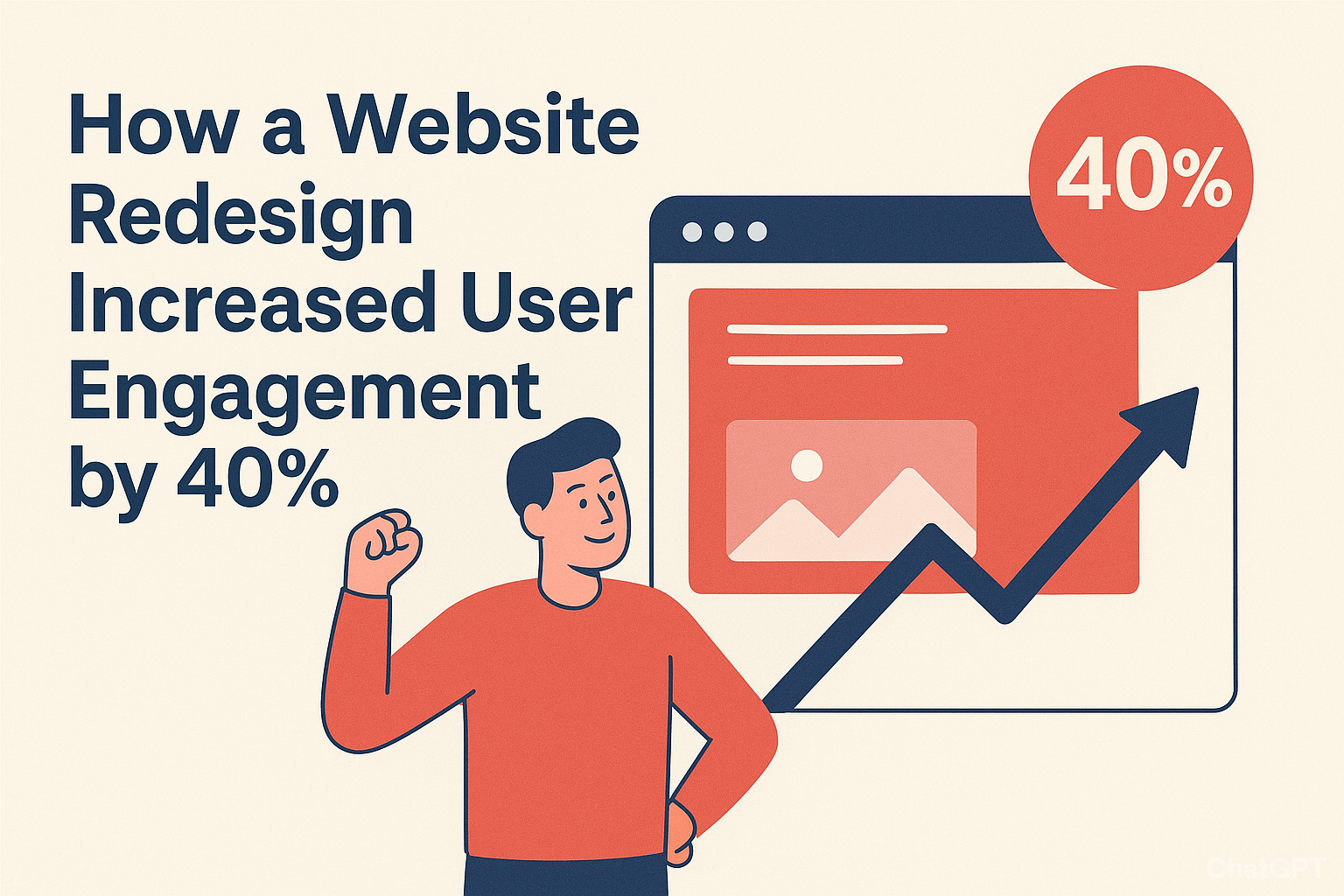
Introduction
First impressions matter and on the internet, your website is your first impression. An outdated, cluttered, or poorly designed website doesn’t just look unprofessional; it drives users away. Studies show that visitors form an opinion about a website in less than a second, and if they don’t like what they see, they leave without exploring further.
Recently, one of our clients was facing this exact challenge. Their website had great content and services, but the design felt outdated, navigation was confusing, and visitors weren’t engaging with the site. After analyzing user behavior, we recommended a full website redesign. The result? A 40% increase in user engagement within three months.
Here’s how we did it, and what you can learn from this success story.
Why Website Redesign Matters
- User Experience (UX) – Clean layouts and intuitive navigation make it easier for visitors to explore.
- Modern Design Trends – Outdated sites reduce trust; a fresh look builds credibility.
- Mobile Responsiveness – With most users browsing on phones, responsive design is non-negotiable.
- Faster Performance – Redesigns often include speed optimization, which keeps users engaged.
- Better Conversions – A well-structured site guides visitors toward calls-to-action (CTAs).
The Changes We Made
- Simplified Navigation – Reduced clutter and made it easier for users to find key pages.
- Modern Visual Design – Clean layouts, updated colors, and professional branding.
- Mobile-First Approach – Ensured flawless browsing across all screen sizes.
- Content Refresh – Reorganized content to highlight value and build trust quickly.
- Stronger CTAs – Placed clear, action-driven buttons in strategic locations.
- Improved Page Speed – Compressed images, optimized code, and implemented caching.
Benefits of the Redesign
✅ 40% more engagement – Users spent more time on-site and explored more pages.
✅ Lower bounce rate – Visitors no longer left after just a few seconds.
✅ Higher trust & credibility – The modern look aligned with the company’s brand image.
✅ Improved conversions – More visitors signed up, clicked CTAs, and made purchases.
✅ Better SEO performance – The redesign improved site speed and structure, boosting search rankings.
Pro Tips for a Successful Website Redesign
- Start with Analytics – Review bounce rates, heatmaps, and user flow before redesigning.
- Think Mobile First – Over 60% of traffic comes from mobile; design with this in mind.
- Use White Space Wisely – A clean layout is easier to read and less overwhelming.
- Prioritize Speed – A fast site keeps users engaged; aim for under 3 seconds load time.
- Test Before Launch – Always A/B test layouts, colors, and CTAs to see what works best.
- Monitor Results – Track engagement metrics post-redesign to measure ROI.
Conclusion
A website redesign isn’t just about making things “look pretty” it’s about creating a better user journey. In our client’s case, thoughtful improvements in design, navigation, and performance led to a 40% increase in engagement and opened the door to more conversions and brand loyalty.
If your website feels outdated, hard to navigate, or isn’t generating results, it may be time for a redesign. Done strategically, it can transform not just how your website looks, but how effectively it drives your business forward.





 Design
Design Development
Development Digital Marketing
Digital Marketing Payment Gateway
Payment Gateway Domain / Hosting
Domain / Hosting WhatsApp API
WhatsApp API













